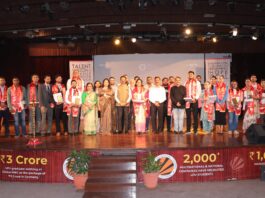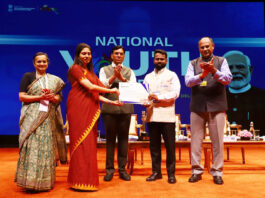Introduction
Spread across almost 550 acres of land and home of around 1 million people (50-60% labour), Dharavi is one of the largest and oldest informal urban settlements of the world. It has developed over the 150 years from an island on a swampy and unused patch of area to presently possess a much looked after area at the heart of the Mumbai city[1].
Dharavi is the hub for small scale industries (unorganized sectors such as leather industry, waste recycling industry, etc.) and export goods across the globe with an estimated annual turnover of around USD 1 billion. It has approx. 5000 businesses entities[2] with in-house 15,000 single-room factories[3] for production. Generally people from Uttar Pradesh, Bihar, and Gujarat come to work in these industries.
As per residents of Dharavi, 60% of Mumbai’s segregated waste comes to Dharavi for processing; indicating the vital role of waste recycling and processing units of Dharavi in maintaining and managing Mumbai’s solid waste management landscape. They are not only managing the waste, but they are making big money out of it and generating employment as well. Dharavi is home to some 30,000 rag pickers, scavengers who find and sort recyclable scraps from the city’s garbage dumps.
Small scale industries / factories
Leather industries:
It is the prominent industry with highest share of turnover among all industries in Dharavi. Large profit margin involved in these industries, attracting young entrepreneurs. Most of these units make use of animal skin (mainly Sheep, Goat and Buffalo) collected from slaughter houses for processing into leather. Animal skin is washed in a washing machine (made up of wood) having large capacity and then cut into desired length. After the cutting process, leather piece put into the pressing machine with the desired pattern and design. Semi-finished leather pieces after pressing are made into final products such as belt, purse, wallet, etc. These products are being exported to foreign brands in very large amount.
Plastic recycling industries:
This industry has 3 phases of the recycling process. Mixed plastic waste is segregated and sorted on the basis of color and hardness. Segregated and sorted plastic waste is crushed in a crushing machine into plastic chips. Plastic chips are washed for dirt removal and then sun dried, before melting them to make into small plastic tablets or pellets. One recycling unit recycles on an average 4 tons of plastic waste a day.
Wax printing:
Wax printing is one of the oldest industries in Dharavi. Approximately 40-50 wax printing units are functional. Hot molten wax is applied to cloth with the help of wooden block having a desired pattern on the bottom of it. After solidification of wax, the cloth is colored. After drying, it is washed in hot water to remove wax so that the pattern becomes visible on the cloth. The worker should be skilled enough to work in this industry because wax printing requires significant level of precision. Workers are generally working 10 hours a day and being paid in the range of INR 500-800/day ($ 8-13/day).
Aluminium brick making industries:
This industry uses the mixed metal waste as their raw material. In the 1st step Aluminium is separated from the mixed metal waste by using magnetic separator. Separated scrap solid Aluminium is melted in a furnace maintained at 6600C (melting point of Aluminium). Then molten Aluminium is molded in the form of solid bricks (5 kg/brick, which has a market price of INR 5000 ($ 78))
Pottery making Units:
This profession generally performed by “kumbhar” community. The peak time for this profession is “Diwali” (a Hindu festival). At the time of Diwali festival the whole area is covered by the smoke emitted by pottery kilns. This business is run by each individual household. Each individual has its pottery kiln and a shop facing the road ahead of their house.
Conclusion
It is concluded from the visit that Dharavi slum is far different from the general perception of the slum. It is the slum which has 5000 various businesses and the industries which exports its products. It’s the slum which has an annual turnover of more than USD1 billion. The visit gave a sense that we can think of process the waste of waste (waste of recycling industries and the unused dump waste). The visit was ended with the thought that It’s not a slum, it’s a slum with the immense opportunities lie within.
References:
- http://edsc.unimelb.edu.au/sites/default/files/docs/DHARAVI_report_web.pdf
- http://www.livemint.com/Home-Page/XA3QExMDx4Z5vcEyQsLUvL/Harvard-students-get-lessons-on-Dharavi.html
- http://www.theguardian.com/environment/2007/mar/04/india.recycling
About the Author: Hitesh Kumar Mahawar is an LPU alumnus and currently an M.Tech. Student at Centre for Technology Alternatives for Rural Areas (CTARA), Indian Institute of Technology Bombay (IIT Bombay) and Project Research Assistant at Rural Technology Action Group (RuTAG), IIT Bombay, Email Id – hiteshmahawar93@gmail.com.
LinkedIn: https://in.linkedin.com/in/hitesh-kumar-mahawar-b6bab783




